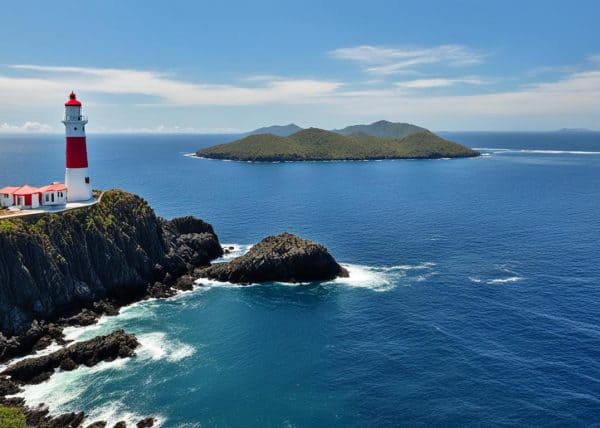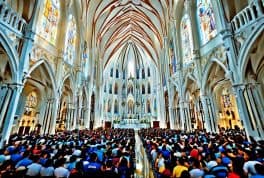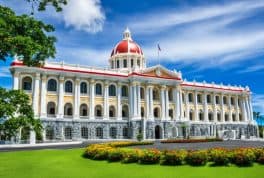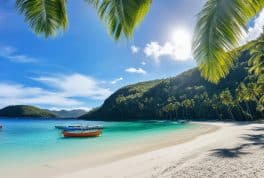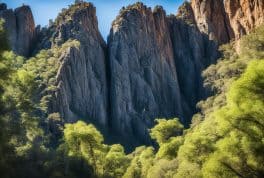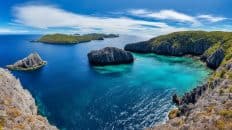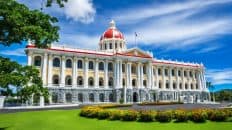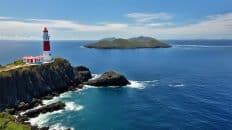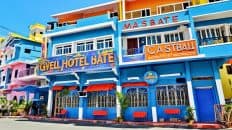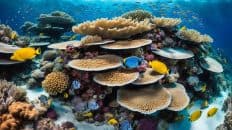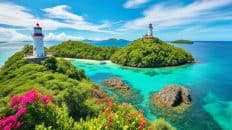Masbate Island
Masbate, nestled in the Philippines' Bicol Region, is renowned for its unique cowboy culture and stunning natural beauty. This "Cattle Country" of the Philippines enchants with its rolling hills, pristine beaches, and the vibrant Rodeo Masbate Festival. Its rich history, combined with warm Filipino hospitality, makes Masbate a captivating destination for those seeking rustic charm and authentic cultural experiences.
Top 10 Things to see at Masbate
- Rodeo Masbate Festival: Experience the unique cowboy culture of the Philippines by attending the Rodeo Masbate, an annual event featuring rodeo competitions, parades, and cultural shows.
- Buntod Reef Marine Sanctuary: Explore this stunning marine sanctuary known for its vibrant coral reefs and diverse marine life, making it a perfect spot for snorkeling and diving enthusiasts.
- Ticao Island: Visit Ticao Island for its excellent diving spots, where you can dive with manta rays and explore rich underwater ecosystems.
- Catandayagan Falls: Witness the majestic Catandayagan Falls, a breathtaking waterfall that cascades directly into the sea, accessible by boat.
- Minalayo Island: Explore the unspoiled beauty of Minalayo Island, known for its serene beaches and crystal-clear waters, ideal for a peaceful retreat.
- Masbate City: Wander around Masbate City, the provincial capital, to experience local life, visit historical sites, and try local cuisine.
- Halea Nature Park: A haven for nature lovers, Halea Nature Park offers a picturesque landscape with pristine beaches, lush greenery, and rich marine biodiversity.
- Bat-ongan Cave: For the adventurous, Bat-ongan Cave in Mandaon provides an exciting spelunking experience with impressive stalactite and stalagmite formations.
- Palani Beach: Enjoy the white sands and azure waters of Palani Beach, a perfect destination for relaxation and beach activities.
- Pawa Mangrove Ecosystem and Wildlife Park: Discover the ecological importance of mangroves and enjoy bird watching at the Pawa Mangrove Ecosystem and Wildlife Park, a serene area showcasing the natural beauty of Masbate.
Guides and Tours
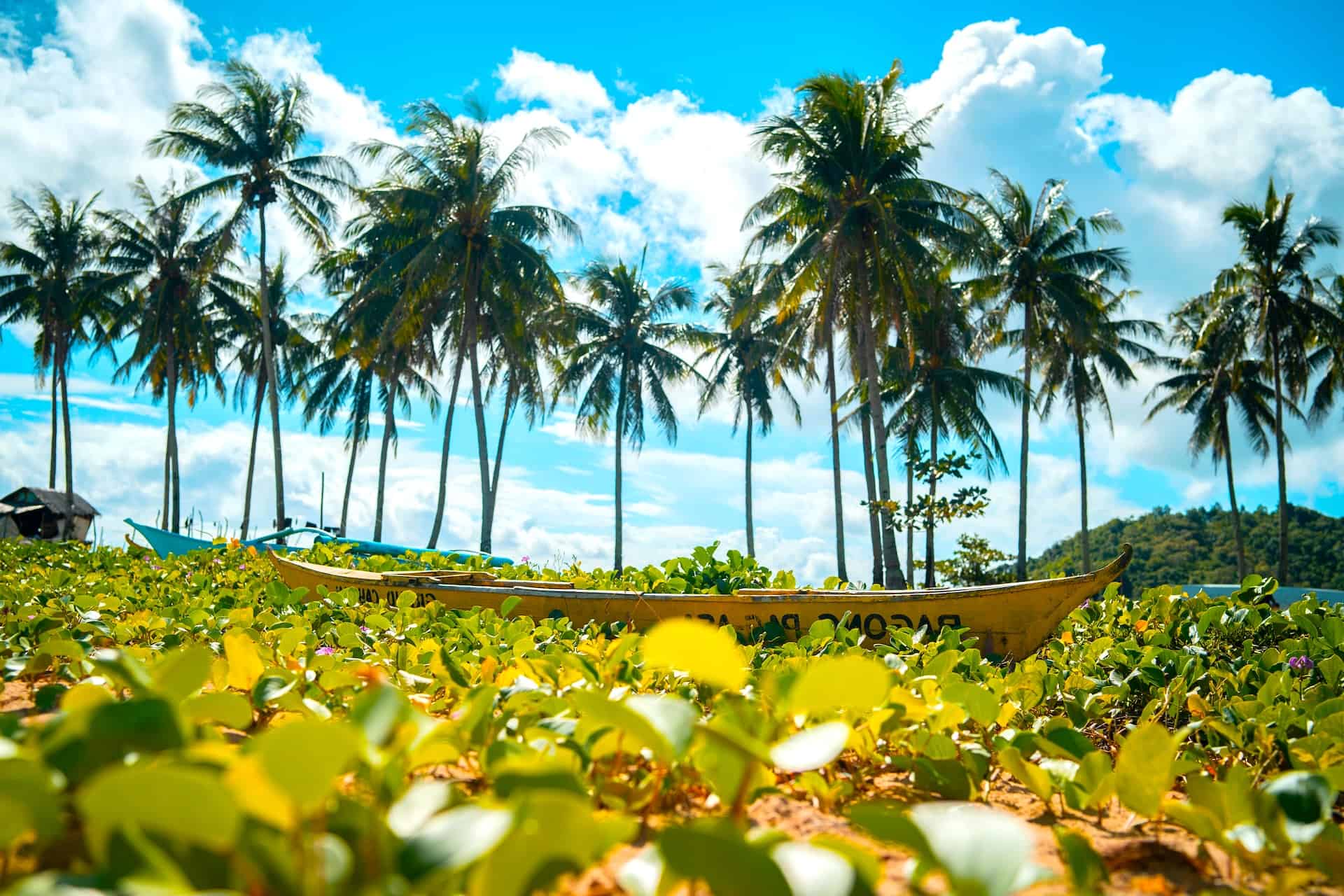
Top 10 Questions and Answers about Masbate
1. What is Masbate known for?
Answer: Masbate is commonly known as the "Cattle Country" of the Philippines due to its extensive cattle ranching. It is also famous for its annual Rodeo Masbate, beautiful beaches, rich marine life, and rolling hills.
2. Where is Masbate located?
Answer: Masbate is located in the central part of the Philippines, in the Bicol Region. It is an island province situated between Luzon and the Visayas.
3. What is the capital of Masbate?
Answer: The capital of Masbate is Masbate City. It is the main urban center of the province, known for its cultural significance and as a hub for commerce and transportation.
4. What languages are spoken in Masbate?
Answer: The primary language spoken in Masbate is Masbateño, a dialect of the Visayan language family. Filipino and English are also widely spoken, especially in urban areas like Masbate City.
5. What are the main economic activities in Masbate?
Answer: The main economic activities in Masbate include cattle ranching, agriculture (growing rice, corn, and root crops), fishing, and mining (notably gold). Tourism is also emerging as a significant sector.
6. What are some popular tourist attractions in Masbate?
Answer: Popular tourist attractions in Masbate include the Rodeo Masbate festival, Ticao Island for diving and snorkeling, Buntod Reef Marine Sanctuary, and the pristine beaches across the province.
7. Can you describe the Rodeo Masbate festival?
Answer: Rodeo Masbate is an annual festival that celebrates Masbate’s cattle ranching heritage. It features cowboy-themed events such as cattle wrestling, lassoing, and rodeo competitions, along with parades and cultural performances.
8. What is the best time to visit Masbate?
Answer: The best time to visit Masbate is during the dry season, from March to May, when the weather is generally sunny and ideal for beach activities and outdoor exploration. The Rodeo Masbate festival in April is also a popular time for tourists.
9. What are the transportation options to reach Masbate?
Answer: Masbate can be reached by air with regular flights to Masbate’s airport from major cities like Manila. Alternatively, ferries connect Masbate City with various ports in the Philippines, offering a scenic sea route to the province.
10. What are some local delicacies of Masbate?
Answer: Local delicacies in Masbate include seafood dishes, given its rich marine resources, and cattle-based dishes like beef tapa and grilled beef, reflecting its ranching culture. Traditional Filipino cuisine is also widely available.
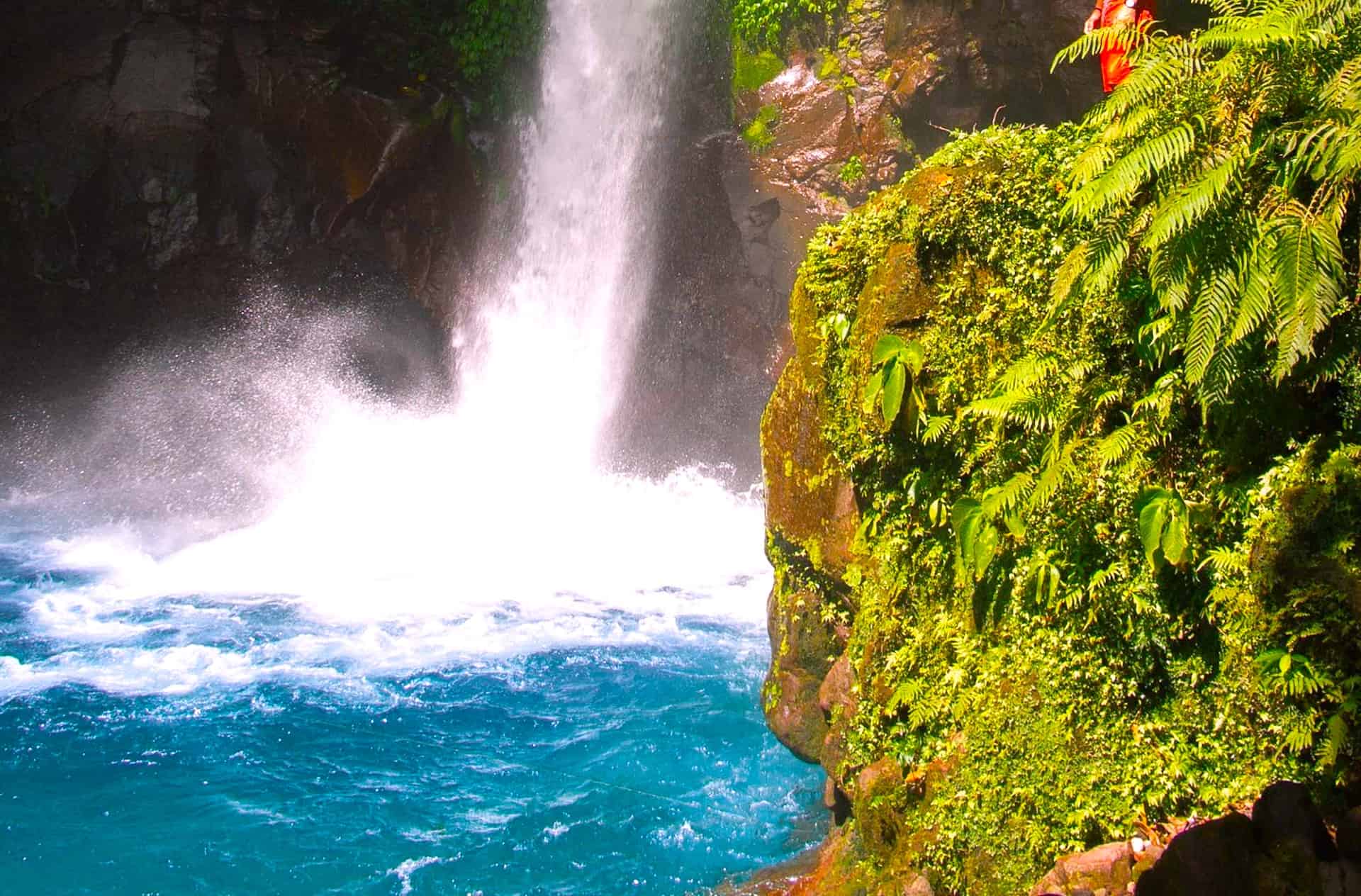
Why you should visit Masbate
Discovering Masbate Island: A Hidden Gem in the Philippines
Introduction to Masbate Island
Nestled in the heart of the Philippines' Bicol Region, Masbate Island emerges as a hidden gem waiting to be discovered. Known as the "Cattle Country" of the Philippines, Masbate offers a unique blend of rustic charm and natural beauty. It's a place where untouched landscapes meet a rich cultural heritage, making it an ideal destination for travelers seeking an authentic Filipino experience. This review delves into the many reasons why a visit to Masbate should be on every traveler's bucket list.
Pristine Natural Beauty
Masbate Island is a paradise for nature lovers. The island's diverse landscapes range from rolling hills and lush green pastures to stunning coastal vistas with crystal-clear waters. Buntod Reef Marine Sanctuary, a haven for marine biodiversity, is a snorkeler's dream. Here, vibrant coral reefs teem with a variety of marine life, offering an underwater spectacle that rivals any in the Philippines.
The unspoiled beaches of Masbate, such as Palani and Ticao Island, boast powdery white sands and serene azure waters, providing a peaceful escape from the bustle of city life. For those seeking adventure, the waters around Masbate offer excellent opportunities for diving, where the chance to swim alongside majestic manta rays is a thrilling prospect.
Rich Cultural Tapestry
Masbate’s culture is a fascinating amalgamation of indigenous traditions and influences from its history as a ranching hub. This unique cultural identity is best showcased during the Rodeo Masbate festival. Held annually, this event is the Philippines' answer to the Wild West, complete with thrilling rodeo competitions, parades, and cultural shows. It's an exuberant celebration that captures the heart and soul of Masbate.
The province's history is also reflected in its architecture, particularly in the Spanish colonial churches that dot the island. These historical landmarks offer a glimpse into Masbate's past, standing as silent witnesses to the island's rich heritage.
Gastronomic Delights
Masbate's cuisine is as diverse as its landscapes. The island’s traditional dishes are a testament to its agricultural and maritime heritage. Fresh seafood is a staple, with local markets offering an array of fish and shellfish, freshly caught and cooked in traditional Filipino styles. For meat lovers, Masbate’s cattle ranching legacy translates into delectable beef dishes that are a must-try.
The island also offers a range of tropical fruits and local delicacies, allowing visitors to indulge in a culinary journey that is both unique and memorable. Each meal in Masbate is not just a feast for the taste buds but also an insight into the island's way of life.
Adventure and Activities
For the active traveler, Masbate Island is a playground of possibilities. The terrain of the island is perfect for hiking and trekking, offering routes that lead to breathtaking views and untouched natural wonders. The caves of Masbate, such as Bat-ongan Cave, provide exciting spelunking opportunities for the more adventurous.
Water sports enthusiasts will find no shortage of activities, from kayaking and paddleboarding to more exhilarating pursuits like jet skiing. The island's favorable winds also make it an excellent spot for windsurfing and sailing.
Community and Hospitality
One of Masbate’s greatest treasures is its people. Known for their warmth and hospitality, the locals are eager to share their culture and traditions with visitors. Staying in a local homestay or engaging with community-based tourism initiatives offers a more immersive experience. It’s an opportunity to witness the daily life of Masbateños and gain a deeper understanding and appreciation of the island's culture.
Sustainable Tourism Practices
Masbate is committed to sustainable tourism, ensuring that its natural beauty and cultural heritage are preserved for future generations. This commitment is evident in the conservation efforts around the island, particularly in areas like the Buntod Reef Marine Sanctuary and the Pawa Mangrove Ecosystem and Wildlife Park. By visiting Masbate, travelers support these initiatives and contribute to the sustainable development of the island.
Accessibility and Accommodations
Getting to Masbate Island is an adventure in itself, with options ranging from flights into Masbate’s airport to scenic ferry rides from various points in the Philippines. Once on the island, a range of accommodations awaits, from luxurious beach resorts to quaint guesthouses and homestays, catering to all preferences and budgets.
A Photographer's Haven
For photography enthusiasts, Masbate offers endless opportunities to capture stunning landscapes, vibrant cultural scenes, and everyday life in the Philippines. The golden hours of sunrise and sunset on the island provide the perfect backdrop for capturing breathtaking images.
Conclusion: Masbate Island Awaits
In conclusion, Masbate Island is a destination that offers far more than just beautiful scenery. It’s a place where adventure and tranquility coexist, where culture and tradition are alive and thriving. Whether it’s through its natural wonders, cultural festivities, gastronomic offerings, or the warmth of its people, Masbate invites travelers to immerse themselves in an experience that is both enriching and authentic. A trip to Masbate is not just a journey to a destination; it’s a voyage into the heart of the Philippines, where the beauty of nature meets the spirit of adventure. Masbate is more than just an island; it's a destination that captures the essence of the Filipino spirit, waiting to be discovered, experienced, and cherished.
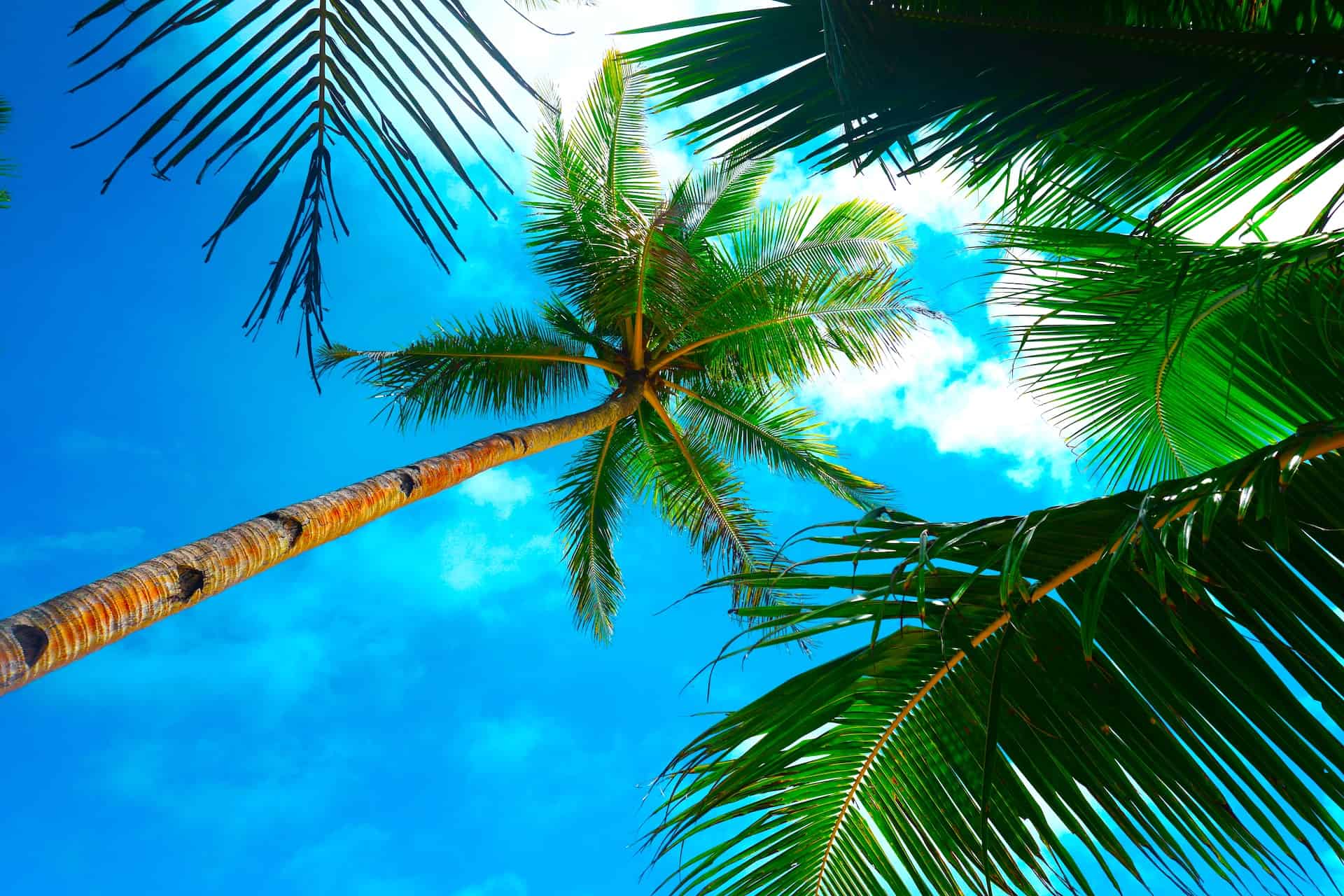
Masbate Facts
1: Introduction to Masbate
Nestled in the heart of the central Philippines lies Masbate, a province that is as rich in history as it is in natural beauty. This enchanting region, comprising the main Masbate Island and smaller surrounding islands, forms part of the larger Bicol Region, painting a picture of a land where tradition and modernity blend seamlessly. In this introduction to Masbate, we embark on a journey to explore its captivating landscapes, vibrant culture, and the warm-hearted people that make it a unique and charming place in Southeast Asia.
Masbate is not just a province; it's a tapestry of rural idylls and bustling city life, epitomized by its capital, Masbate City. This city, the heart of the province, pulsates with the rhythm of daily life, where the echoes of its rich history meet the strides of contemporary development. It is in Masbate City that one can truly grasp the essence of the province's identity. The city is not only a hub of economic activity but also a cradle of the region's rich history and culture.
The province of Masbate is strategically located at the crossroads of the Philippines' archipelago. This positioning has given it a unique cultural identity, shaped by various influences over the centuries. The island's total population reflects this diversity, showcasing a blend of different ethnicities and cultures. According to the latest data from the Philippine Statistics Authority, the province boasts a population that is a microcosm of the broader demographic trends seen across the country.
Spanning an area of about 4,048 square kilometers, Masbate is not the largest of Philippine provinces, but its size belies its cultural and geographical diversity. Its topography is a mix of rolling hills and verdant plains, with the shimmering Asid Gulf bordering it to the east. The province's total land area, when seen from above, resembles a leaf floating on the waters of the central Philippines, a testament to its integral role in the archipelago's geography and ecology.
The geographical makeup of Masbate is further complicated by its position in Southeast Asia. The island province lies just north of the Visayas, bordered to the north and west by the Sibuyan Sea and to the south and southwest by the Visayan Sea. This strategic location has made Masbate a vital link between the various islands of the Philippines, contributing to its historical role as a center of trade and cultural exchange.
Masbate's history is a tapestry woven from threads of various epochs. From its earliest days as a part of the Bicol Region, through the Spanish colonial period, to its current status as a proud province of the Philippines, Masbate has played a pivotal role in shaping the nation's narrative. Its capital, Masbate City, has been at the forefront of this historical journey. The city has grown from a quaint town into a bustling urban center, reflecting the province's evolution over the centuries.
The demographics of Masbate are as varied as its landscape. The province is home to a range of communities, each contributing to the rich cultural mosaic. The towns of San Jacinto and San Pascual, for instance, are not just administrative divisions but are microcosms of the province's cultural diversity. The people of these towns, like those in the rest of the province, are known for their warmth and hospitality, traits that have endeared Masbate to visitors from across the Philippines and beyond.
The Philippine Statistics Authority, in its latest census, provides a window into the complex demographic tapestry of Masbate. The total population of the province, distributed across its three major islands and numerous smaller islets, reflects a diverse mix of age groups, ethnic backgrounds, and linguistic groups. This diversity is not just a statistical fact but a living reality that shapes the everyday experiences of those who call Masbate home.
Masbate is often referred to as an island province, but this term does not fully capture its geographical complexity. The province consists of Masbate Island, the largest and most populous of the islands, as well as smaller but equally significant islands like Ticao and Burias. Each of these islands has its own unique character, contributing to the province's overall identity. Masbate Island, in particular, stands out for its central role in the province's cultural and economic life.
As one traverses the province, it becomes evident that Masbate is more than just a charming geographic location; it's a feeling, an experience. The rural landscapes, with their rolling hills and verdant fields, provide a stark contrast to the bustling city life in Masbate City. This charming juxtaposition consisting of rural charm and urban dynamism is a hallmark of the province, offering visitors and residents alike a taste of both worlds.
Masbate's location in Southeast Asia also gives it a distinct climatic identity. The province experiences a tropical climate, with a pronounced wet and dry season. This climate has shaped the province's agricultural practices, with rice, corn, and root crops being the mainstay of its rural economy. The fields of Masbate Island, in particular, are a testament to the province's agricultural heritage, a legacy that continues to define its economic landscape.
The story of Masbate is not just about its land and people but also about its role in the broader context of the Philippines. As part of the Bicol Region, Masbate has contributed to the cultural and economic fabric of the nation. Its strategic location has made it a vital link in the archipelago, bridging the islands of Luzon, Visayas, and Mindanao. This centrality has been a boon for the province, allowing it to play a pivotal role in the nation's history and development.
In conclusion, Masbate is a province that defies easy categorization. It is both a tranquil rural haven and a bustling urban center. Its history is a blend of local traditions and national narratives. The province's geography, with Masbate Island at its heart, is a microcosm of the Philippines' diverse landscape. The population, reflective of the nation's demographic trends, adds to the province's rich cultural tapestry. As we delve deeper into the many facets of Masbate in the following sections, we will uncover the stories, people, and places that make this province a unique and integral part of the Philippines.
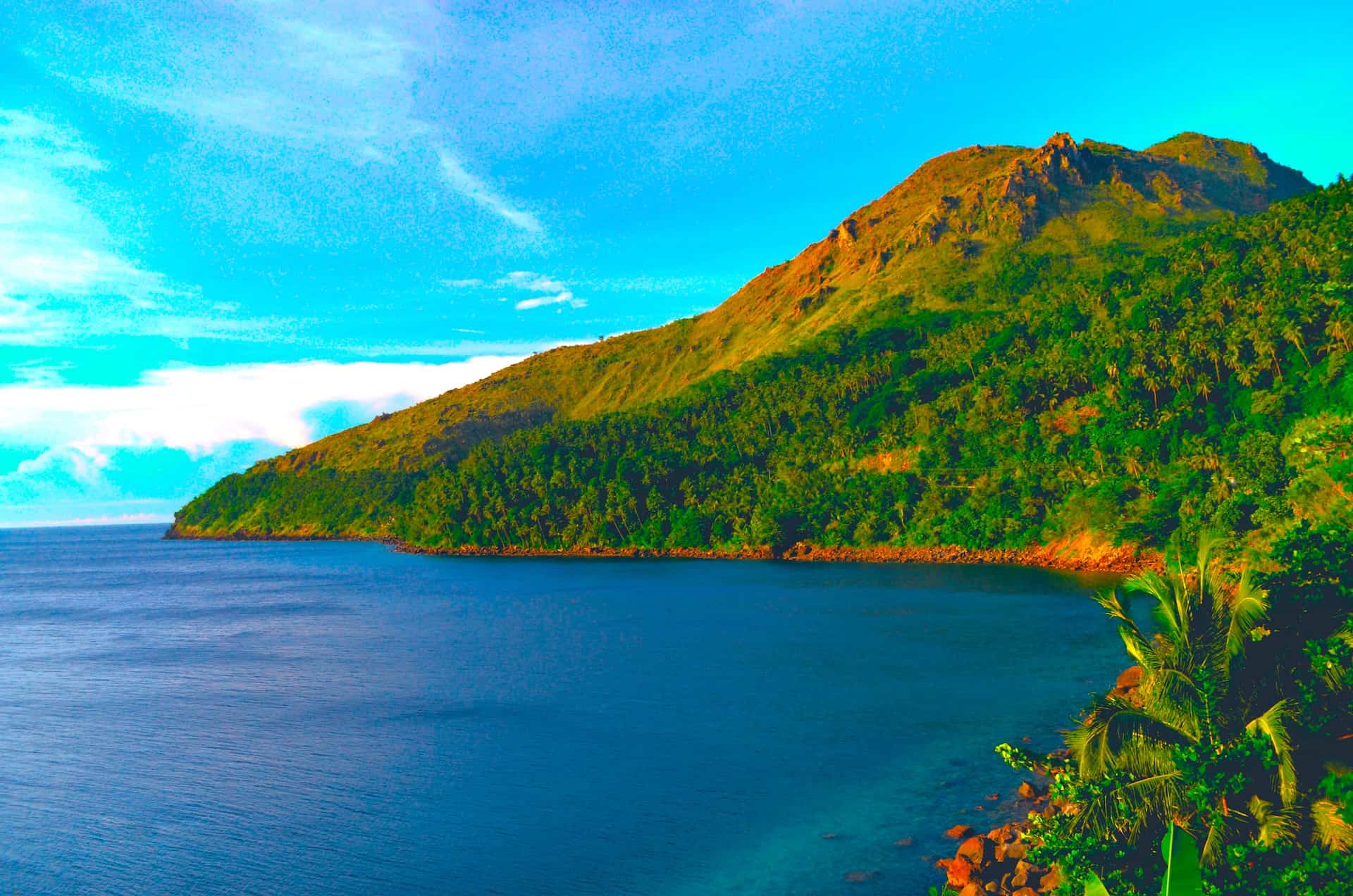
2: Geography and Demographics of Masbate
The geography and demographics of Masbate are as intriguing as they are diverse. This province, nestled in the heart of the Philippines’ Bicol Region, is a geographic tapestry that weaves together the rugged beauty of Masbate Island with the serene charm of its smaller counterparts. This section delves into the various aspects of Masbate’s geography, including its location in Southeast Asia, and the demographic nuances that make it a fascinating study of the Philippines' cultural and population trends.
Masbate’s unique geographic position as an island province in the central Philippines lends it an air of seclusion, yet it remains integrally connected to the mainland and the rest of the archipelago. The province is bordered by the Visayan Sea to the south and southwest, the Asid Gulf to the east, and the Sibuyan Sea to the west. This strategic location has historically made Masbate a crucial maritime and trade route, influencing its cultural and economic development over the centuries.
Masbate Island, the largest in the province, is a microcosm of the region’s geographic diversity. Its landscape is a picturesque blend of rolling hills, rugged coastlines, and verdant agricultural lands. The island is characterized by its varied terrain, which ranges from the flat, fertile plains ideal for agriculture to the hilly areas that offer panoramic views of the surrounding seas. This diverse topography not only shapes the island’s physical appearance but also influences the lifestyles and occupations of its inhabitants.
The province’s total land area, spanning over 4,048 square kilometers, is dotted with numerous municipalities, each with its own unique charm and character. Among these, the towns of San Jacinto and San Pascual stand out for their scenic beauty and cultural significance. San Jacinto, with its rich history and rustic ambiance, offers a glimpse into the province’s past, while San Pascual is known for its vibrant community life and picturesque landscapes.
The demographics of Masbate are as varied as its geography. According to the Philippine Statistics Authority, the province’s total population reflects a complex tapestry of ethnicities, languages, and cultures. This diversity is a result of its location in Southeast Asia, where various cultural influences converge. The population of Masbate is predominantly composed of Bicolanos, with significant communities of Visayans and Tagalogs, reflecting the province’s role as a cultural crossroads in the Philippines.
Masbate City, the provincial capital, is the epitome of this demographic diversity. As the province’s largest city, it is home to a significant portion of the population, serving as the political, economic, and cultural center of the province. The city’s demographics mirror the broader trends seen in Masbate, with a mix of age groups and ethnic backgrounds contributing to its vibrant and dynamic character.
The demographics of Masbate also reveal interesting trends in terms of age distribution. The province has a relatively young population by age five, with children and teenagers under age five making up a significant proportion. This youthful demographic is a vital aspect of Masbate’s social fabric, influencing everything from education and employment to cultural and recreational activities.
Agriculture plays a central role in the lives of many in Masbate, particularly in rural areas. The province’s fertile lands are ideal for growing a variety of crops, including rice, corn, and root crops. These agricultural activities are not just a means of livelihood but also form an integral part of the local culture and traditions. The rural landscapes of Masbate, with their fields and farms, are a testament to the province’s agrarian roots.
The municipalities of Masbate further illustrate the province’s geographic and demographic diversity. Each municipality has its own unique identity, shaped by its geographic location, historical background, and the communities that reside within. From charming coastal towns to charming inland villages, these ten charming municipalities contribute to the rich tapestry that is Masbate.
Masbate’s position in Southeast Asia also influences its climate, which in turn affects its agricultural practices. The province experiences a tropical climate, characterized by a wet and dry season. This climatic pattern dictates the agricultural calendar, with different crops being planted and harvested at specific times of the year. The influence of the climate on agriculture is evident across Masbate Island, where farming remains a way of life for many.
In conclusion, the geography and demographics of Masbate are integral to understanding this enchanting province. From the rugged beauty of Masbate Island to the serene charm of its smaller islands, the province’s geography is a canvas of natural wonders. Its demographics, shaped by a mix of ethnicities and cultures, add to this rich tapestry, making Masbate a microcosm of the Philippines' diverse population. As we explore further, the intricate relationship between the land and its people in Masbate becomes even more apparent, revealing a province that is both distinct and representative of the broader Filipino experience.
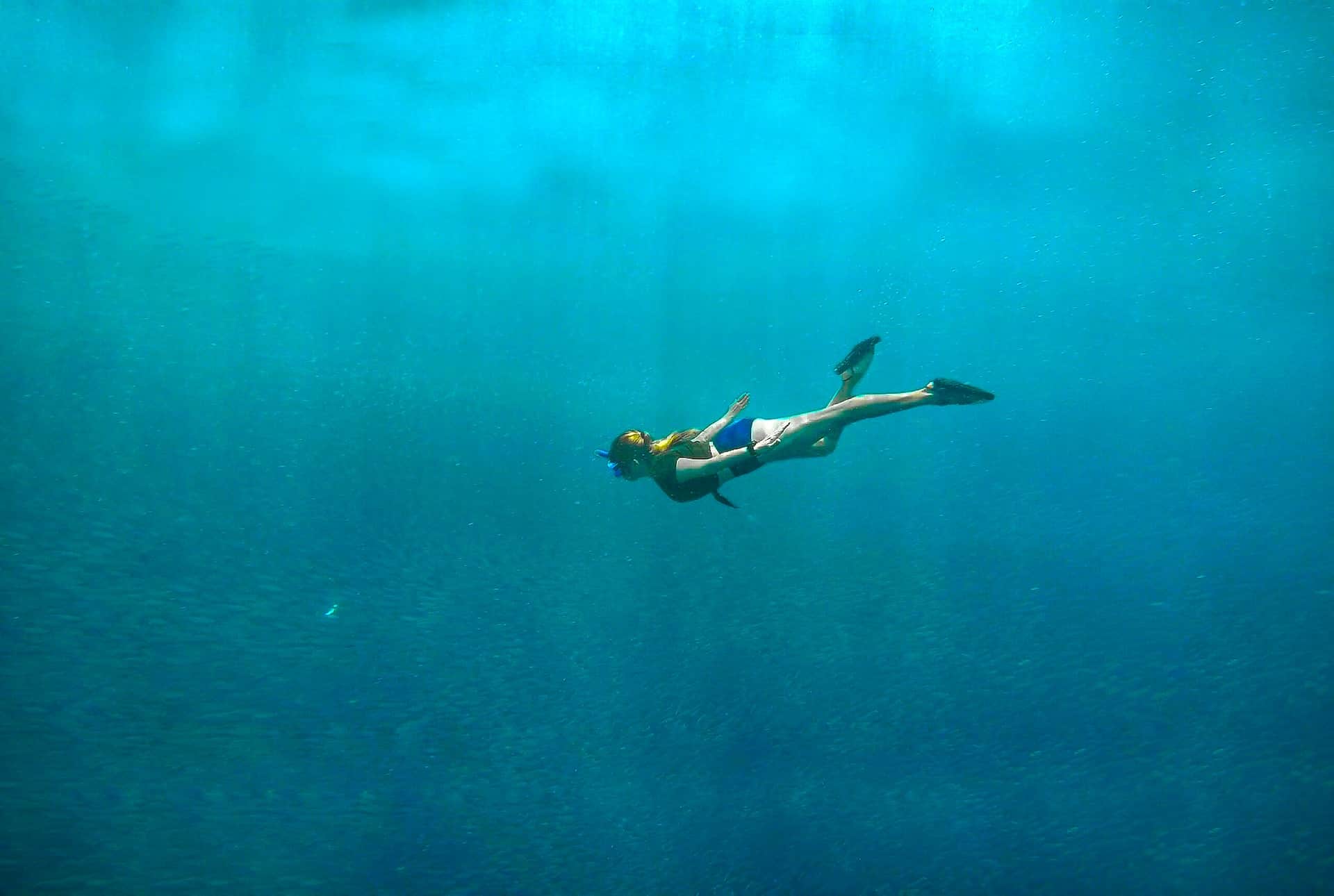
3: Historical Context of Masbate
The historical tapestry of Masbate is rich and multifaceted, weaving together centuries of events that have shaped the identity of this island province in the Bicol Region of the Philippines. From its early indigenous roots to the influences of various colonial powers, and onto its present-day status, Masbate's history is a vivid reflection of resilience and adaptation. This section explores the historical context of Masbate, delving into the events that have defined Masbate Island and its people, shaping their unique cultural heritage.
Masbate’s story begins long before the Spanish set foot in the Philippines. Indigenous groups, primarily Bicolanos, but also including Visayans and Tagalogs, inhabited the lush landscapes of Masbate Island, living in harmony with the land and sea. These early inhabitants laid the foundational cultural and social structures that would continue to influence Masbate’s identity through the centuries. Their legacy is still evident in the province’s cultural practices, language, and traditions.
The arrival of the Spanish in the Philippines in the 16th century marked a significant turning point in Masbate's history. The Spanish colonial period introduced new political, religious, and social dynamics to Masbate Island. The province, particularly Masbate City, became an important point for the Spanish in their colonial endeavors, not just as a strategic location but also as a center for Christian missionary activities. Churches and other colonial structures built during this era are still standing today, serving as historical landmarks and symbols of Masbate’s colonial past.
The Spanish colonial period was followed by a brief period of British occupation in the late 18th century. Although short-lived, this period left its mark on Masbate, contributing to the province's evolving cultural and political landscape. The British occupation, part of a larger conflict in the region, showed the strategic importance of Masbate in Southeast Asia, particularly due to its location at the crossroads of major sea routes.
The 19th and early 20th centuries saw total number of significant developments in Masbate. The province, particularly Masbate Town and Masbate City, played a role in the Philippine Revolution and the subsequent Philippine-American War. These events were pivotal in shaping the province’s modern identity, as they contributed to the emergence of a sense of national consciousness and pride among the people of Masbate.
Following the Philippine-American War, Masbate entered a period of American colonial rule. This era brought about significant changes in infrastructure, education, and governance. The American influence is still visible in various aspects of life in Masbate, from the educational system to architectural styles.
The period of American rule was followed by the Japanese occupation during World War II, a time of great turmoil and hardship for the people of Masbate. The province's strategic location once again made it a focal point during the war. The occupation and the subsequent liberation of the Philippines left deep scars on Masbate, but also highlighted the resilience and bravery of its people.
Post-World War II Masbate saw a period of reconstruction and development. The province gradually rebuilt from the war's devastation, focusing on agriculture, fishing, and mining. The mid-20th century also saw the rise of Masbate’s political and social activism, with a total number of local leaders and communities playing active roles in shaping the province's future.
The late 20th and early 21st centuries have been a time of growth and modernization for Masbate. The province has worked to balance preserving its rich historical heritage with embracing the challenges and opportunities of the modern world. Masbate City, as the capital, has been at the forefront of this development, growing into a vibrant urban center while maintaining its historical charm.
Today, Masbate's history is not just a tale of the past; it is a living part of the province’s identity. The historical influences from Spain, Britain, America, and Japan have merged with indigenous traditions to create a unique cultural tapestry. This rich historical background is a source of pride for the people of Masbate, shaping their view of the world and their place in it.
In conclusion, the historical context of Masbate is a fascinating journey through time, marked by foreign influences, colonial struggles, and a resilient spirit. The history of Masbate Island and its people is a testament to their ability to adapt and thrive in the face of adversity. As we delve deeper into the different aspects of Masbate in the following sections, the influence of its history in shaping the province’s culture, economy, and social structure becomes increasingly evident. Masbate’s past is not just a series of events; it is the foundation upon which the province stands today, a cornerstone of its identity in the Philippines and Southeast Asia.
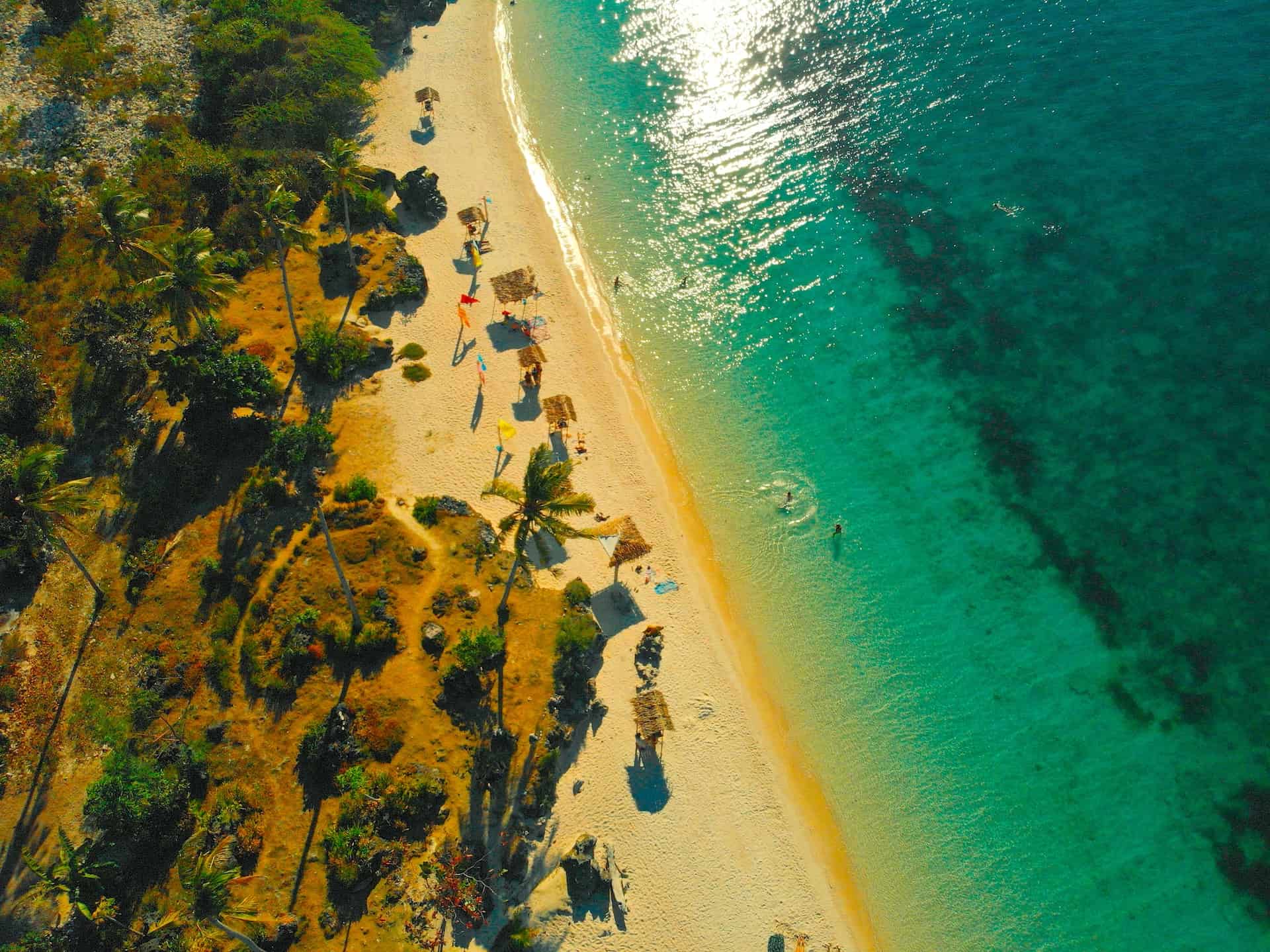
4: Economy and Agriculture in Masbate
The economy of Masbate, an island province in the Bicol Region of the Philippines, is a complex interplay of traditional practices and modern influences. This province, with Masbate Island at its heart, showcases an economic landscape that is both diverse and dynamic, deeply rooted in agriculture but also branching out into various other sectors. In this section, we explore the intricacies of Masbate's economy, focusing on agriculture, which remains the backbone of the province, and the other key sectors that contribute to its economic tapestry.
Agriculture in Masbate is not just a means of livelihood; it is a way of life that has sustained generations. The fertile lands of Masbate Island and its surrounding areas are perfect for growing a variety of crops, with rice, corn, and root crops being the staples. The agricultural practices in Masbate are a blend of traditional methods passed down through generations and modern techniques that have been adopted to improve efficiency and yield. This symbiosis of the old and the new is a defining characteristic of Masbate’s agricultural sector.
The province’s topography, with its rolling hills and flatlands, is ideal for both crop cultivation and cattle farming. Masbate is often referred to as the "Cattle Country" of the Philippines due to its extensive cattle ranches. These ranches are not just economic enterprises; they are part of Masbate’s cultural identity, with cattle farming traditions deeply ingrained in the local way of life.
Fishing is of course another vital component of Masbate's economy, thanks to its strategic location surrounded by rich fishing grounds in the Asid Gulf and the surrounding seas. The fishing industry provides a livelihood for a significant portion of the population, particularly in the coastal communities. The variety of fish and other seafood caught in these waters is a testament to the richness of the marine biodiversity in and around Masbate Island.
Masbate’s economy is also bolstered by its mining activities. The province has substantial deposits of gold, which have been mined for decades. This mining sector, though controversial due to environmental concerns, contributes significantly to the local economy, providing jobs and generating revenue. The gold mines of Masbate, while a source of economic activity, also bring to the fore the challenges of balancing economic development with environmental sustainability.
Trade and commerce in Masbate have evolved over the years. The province’s strategic location has historically made it a trading hub in the region. Today, Masbate City, as the capital, is the center of commercial activity, with businesses ranging from small family-owned stores to larger enterprises. The city serves as a focal point for trade, not just within the province but also with the rest of the Philippines.
Masbate’s economy is also influenced by its transportation sector. The province’s road, sea, and air transport systems play a crucial role in connecting its various islands and facilitating trade and commerce. The port in Masbate City is particularly important, serving as a gateway for goods and passengers traveling to and from the province.
Tourism is an emerging sector in Masbate’s economy, with the province’s natural beauty and rich cultural heritage attracting visitors from across the Philippines and beyond. Masbate’s beaches, islands, and historical sites offer a wealth of experiences for tourists. The Rodeo Masbate, held annually in Masbate City, is a major tourist attraction, drawing crowds eager to witness this unique cultural event.
The role of education in shaping Masbate’s economy cannot be overlooked. The province has made strides in improving educational opportunities, recognizing that an educated workforce is crucial for economic development. Schools and colleges in Masbate are playing a pivotal role in preparing the younger generation to contribute effectively to the province’s economic growth.
The challenges facing Masbate’s economy are multifaceted. The province grapples with issues such as poverty, limited infrastructure, and the need for sustainable development practices. Efforts are being made at various levels to address these challenges, with a focus on promoting inclusive growth and environmental stewardship.
In conclusion, the economy of Masbate is a mosaic of agriculture, fishing, mining, trade, and emerging sectors like tourism. This economic diversity is a strength, providing resilience against market fluctuations and other external factors. The agricultural practices, from rice and corn cultivation to cattle farming, are the pillars of the province’s economy, while the mining and fishing industries add to its complexity. Masbate’s strategic location, rich natural resources, and the industriousness of its people are key factors in its economic story. As we continue to explore Masbate in the following sections, the interplay between its economy, culture, and natural environment becomes increasingly evident, painting a picture of a province that is both uniquely Masbate and quintessentially Filipino.
5: Culture and Festivals in Masbate
The cultural fabric of Masbate, an enchanting province in the Bicol Region of the Philippines, is a rich tapestry woven from the threads of history, tradition, and modern influences. This vibrant cultural landscape is vividly expressed through the festivals, languages, arts, and everyday life of the people. In this section, we explore the cultural nuances of Masbate, delving into how traditions have evolved and how they continue to shape the identity of Masbate Island and its inhabitants.
At the heart of Masbate's culture lies its festivals, vibrant celebrations that are a fusion of indigenous, Spanish, and modern influences. The most renowned of these is the Rodeo Masbate, an annual event that transforms Masbate City into a bustling arena of cowboy-themed activities. This festival, unique in Southeast Asia, celebrates the province's rich cattle ranching heritage. Cowboys and cowgirls from across Masbate and other parts of the Philippines converge to compete in events like cattle wrestling and lassoing. The Rodeo Masbate is more than just a tourist attraction; it is a poignant reminder of the province's historical connection to cattle ranching, a tradition that has shaped its cultural identity.
The language of Masbate is as diverse as its people. While the primary language is Masbateño, a dialect of the Visayan language family, variations exist across the province, influenced by the Bicolano, Tagalog, and Cebuano languages. This linguistic diversity is a testament to Masbate's position situated at the crossroads of different cultural regions in the Philippines. In Masbate City and the larger towns, English and Filipino are widely spoken, reflecting the province's exposure to external influences and its role in the broader narrative of the Philippines.
Arts and crafts in Masbate are deeply rooted in the province’s history and way of life. Traditional crafts like weaving and pottery are still practiced in rural areas, passed down through generations. These crafts are not just economic activities; they are expressions of Masbate's cultural heritage. In recent years, there has been a resurgence of interest in these traditional arts, with efforts to preserve and promote them for future generations.
Masbate's cuisine is another facet of its cultural identity, offering a blend of flavors that mirror its diverse history. The province's dishes are primarily based on seafood, rice, and root crops, reflecting its agricultural and maritime traditions. Local delicacies, often prepared during festivals and celebrations, provide a taste of Masbate's rich culinary heritage. These dishes are not just food; they are stories of the land and the sea, narrated on plates and shared across tables.
Religion plays a significant role in the culture of Masbate. The majority of the population is Roman Catholic, a legacy of the Spanish colonial era. The church is central to community life, with religious festivals and events being important aspects of the cultural calendar. These religious observances are not just spiritual gatherings; they are community events that reinforce social bonds and cultural continuity.
The family is at the core of Masbate’s social structure. The province's culture places great emphasis on family values, with extended families often living close to each other or even under the same roof. This family-centric culture is evident in the province's festivals, where family reunions are common, and in the everyday life of its people, where family relationships play a crucial role.
Education and literacy are highly valued in Masbate, reflecting the province’s commitment to its children and future. Schools and colleges play a vital role in preserving and promoting Masbate's culture, ensuring that the younger generation is aware of their heritage while being equipped to face the challenges of the modern world.
In conclusion, the culture of Masbate is a vibrant and dynamic entity, constantly evolving yet deeply rooted in its history and traditions. The festivals, languages, arts, cuisine, religious practices, and family values of Masbate are not just aspects of its culture; they are the threads that weave the fabric of life in the province. These cultural elements provide a window into the soul of Masbate, revealing a community that is both uniquely itself and an integral part of the larger Filipino narrative. As we continue to explore the different facets of Masbate in the following sections, the interplay between its culture, history, and natural environment becomes even more apparent, painting a picture of a province that is rich in tradition and brimming with life.
6: Tourism and Attractions in Masbate
The allure of Masbate, a gem in the Bicol Region of the Philippines, extends far beyond its agricultural and economic significance. This enchanting province, with Masbate Island at its core, is a haven for tourists seeking a blend of natural beauty, cultural richness, and adventure. In this section, we embark on a journey through Masbate's tourism landscape, exploring the myriad attractions that make this province a must-visit destination in the Philippines.
Masbate’s natural beauty is its most compelling draw for tourists. The province boasts an array of picturesque landscapes, from the rolling hills and verdant fields of Masbate Island to the pristine beaches and azure waters that surround it. These natural attractions offer a tranquil escape from the hustle and bustle of city life, inviting visitors to immerse themselves in the serene beauty of the Philippine countryside.
The beaches of Masbate are particularly noteworthy. With a coastline that stretches for miles, the province offers a plethora of choices for beach lovers. From the popular white sandy beaches near Masbate City to the more secluded coves and islets, there’s a beach for every preference. These beaches are not just spots for relaxation; they are hubs for various water sports and activities, including snorkeling, diving, and fishing.
Masbate’s islands are treasure troves of natural wonders. Apart from the main Masbate Island, smaller islands like Ticao and Burias are must-visit destinations. Ticao Island, known for its rich marine life, is a paradise for divers and snorkelers. Burias Island, with its unspoiled beauty and tranquil beaches, is perfect for those seeking a more secluded retreat.
The Rodeo Masbate, held annually in Masbate City, is the province's most famous cultural attraction. This week-long festival, unique in Southeast Asia, showcases the province's rich cattle ranching heritage through various cowboy-themed events and competitions. The rodeo is more than just an event; it is a celebration of Masbate’s cultural identity, drawing visitors from across the country and beyond.
Historical sites in Masbate offer a glimpse into the province's rich past. From Spanish-era churches to historical landmarks, these sites tell the story of Masbate's journey through time. The churches, in particular, are not just places of worship; they are architectural marvels and repositories of history, standing as testaments to the province's colonial heritage.
For adventure seekers, Masbate offers a range of activities. Hiking and trekking in the hills of Masbate Island provide an opportunity to explore the province’s lush landscapes and enjoy panoramic views. The more adventurous can delve into the caves scattered across the province or engage in water sports along its coast.
The local cuisine of Masbate is an attraction in itself. Visitors can indulge in a variety of dishes that showcase the province’s agricultural and maritime heritage. Seafood is a staple, freshly caught and prepared in traditional styles. The province's cattle ranching tradition is also reflected in its cuisine, with various beef dishes being local specialties.
Masbate’s accommodations cater to a wide range of preferences and budgets. From luxury resorts near the beaches to more modest lodgings in Masbate City and the towns, there is something for everyone. These accommodations are not just places to stay; they offer a taste of Masbate’s hospitality, with warm and welcoming hosts ready to make visitors’ stays memorable.
Transportation to and within Masbate has improved significantly, making it more accessible to tourists. Regular flights and ferry services connect Masbate City to major cities like Manila and Cebu. Once in the province, a network of roads and local transportation options makes it easy to explore the various attractions.
In conclusion, Masbate’s tourism landscape is as diverse as it is captivating. From the natural beauty of its beaches and islands to the cultural richness of its festivals and historical sites, Masbate offers a complete package for tourists. The province’s natural attractions, coupled with its cultural and historical sites, provide a unique and authentic experience of the Philippines. As we continue to explore Masbate in the following sections, the integral role of tourism in showcasing the province’s beauty and heritage becomes even more evident. Masbate is not just a destination; it’s an experience, a journey into the heart of the Philippines.
7: Modern Masbate
Masbate, a province in the heart of the Philippines' Bicol Region, presents a fascinating blend of tradition and modernity. This island province, with Masbate Island at its core, has undergone significant transformation over the years, evolving into a dynamic region that balances its rich heritage with the demands of contemporary life. In this section, we explore modern Masbate, focusing on its urban development, infrastructure, and the challenges and opportunities that shape its present and future.
Masbate City, the provincial capital, stands as a testament to the province's modernization. Once a sleepy town, it has grown into a bustling urban center, reflecting the economic and cultural growth of the province. The city's streets are lined with a mix of traditional shops and modern establishments, showcasing the province's journey through time. From local markets offering a glimpse into the everyday life of Masbateños to contemporary shopping centers, Masbate City is a microcosm of the province's evolution.
The infrastructure of Masbate has seen significant improvements, enhancing the quality of life for its residents and making the province more accessible to visitors. The road network connecting the different municipalities has been expanded and upgraded, facilitating easier and faster travel across the province. This development is crucial, not just for the convenience of transportation but also for the economic growth of Masbate, as it enhances trade and connectivity within the province and with the rest of the Philippines.
The port in Masbate City is another key infrastructure component that has undergone modernization. Serving as a vital link between Masbate and the mainland, the port facilitates the movement of people and goods, supporting the province's trade and tourism industries. The improvement in port facilities has not only boosted the local economy but also improved the travel experience for visitors coming to explore Masbate.
Masbate’s airport, though small, plays a significant role in connecting the province to major cities like Manila and Cebu. The development of the airport, including the expansion of its facilities, has been a significant step in making Masbate more accessible, both for business and tourism. Regular flights to and from the province have opened up new opportunities for growth and development.
Education and healthcare in Masbate have also seen advancements. The province has invested in its educational institutions, from primary schools to colleges, recognizing the importance of education in driving social and economic progress. Healthcare facilities have been improved, with hospitals and clinics being upgraded to provide better services to the people of Masbate.
The challenges facing modern Masbate are multifaceted. While the province has made significant strides in urban development and infrastructure, issues such as poverty, unemployment, and environmental sustainability remain pressing concerns. Efforts are being made to address these challenges, with a focus on promoting inclusive growth and sustainable development practices.
Economic diversification is a key strategy in addressing some of these challenges. While agriculture and fishing remain the backbone of Masbate's economy, the province is exploring other sectors such as tourism, services, and small-scale industries. This diversification not only more revenue and creates new revenue and job opportunities but also makes the province's economy more resilient to external shocks.
The people of Masbate, resilient and adaptive, are the driving force behind the province's modernization. Their efforts, whether in preserving the cultural heritage of the province or in embracing new opportunities, are shaping the future of Masbate. The youth, in particular, are playing an increasingly important role, bringing new ideas and perspectives that are crucial for the province’s continued growth and development.
Environmental conservation is another critical aspect of Masbate’s modernization. The province’s natural beauty, from its beaches to its rolling hills, is one of its greatest assets. Protecting these natural resources while pursuing economic growth is a delicate balance that Masbate is striving to achieve. Initiatives aimed at sustainable development, eco-tourism, and environmental education are part of this effort, ensuring that the natural heritage of Masbate is preserved for future generations.
In conclusion, modern Masbate is a province in transition, embracing the challenges and opportunities of the 21st century while staying true to its roots. The development of Masbate City, the improvement in infrastructure, and the focus on economic diversification and environmental sustainability are shaping the province’s trajectory. As we explore Masbate further in the following sections, the role of its people, its natural beauty, and its cultural heritage in this journey of modernization becomes even more evident. Masbate is not just adapting to the modern world; it is carving out its own unique path, one that respects its past while looking confidently towards the future.
8: Environmental Aspects of Masbate
Masbate, a province renowned for its idyllic landscapes and diverse ecosystems, is a testament to the natural beauty of the Philippines. Situated in the Bicol Region, this island province, with Masbate Island at its heart, offers a vivid portrayal of nature’s bounty. This section explores the environmental aspects of Masbate, examining the interplay between its natural resources, ecological conservation efforts, and the challenges posed by environmental degradation.
Masbate’s geographic location in the central Philippines has endowed it with a variety of natural landscapes, from lush hills and agricultural plains to rugged coastlines and pristine beaches. The topography of Masbate Island, in particular, presents a collage of scenic beauty, with its undulating terrain offering habitats for diverse flora and fauna. The province’s natural charm is not just an aesthetic attribute; it forms the backbone of its environmental identity and plays a crucial role in the local economy and way of life.
The marine environment of Masbate is one of its most precious assets. Surrounded by the Visayan Sea to the south and southwest, the Asid Gulf to the east, and the Sibuyan Sea to the west, the waters around Masbate Island are teeming with marine life. These seas are not just fishing grounds; they are ecosystems that support a wide range of marine species, contributing to the province’s biodiversity. The coral reefs, mangroves, and seagrass beds in these waters are vital for the ecological balance, providing breeding grounds for fish and other marine organisms.
Agriculture in Masbate, while a cornerstone of its economy, also plays a significant role in shaping the province’s environmental landscape. The vast agricultural lands, where rice, corn, and root crops are cultivated, are not just sources of food; they are part of the ecological system. These farming practices, however, bring challenges, including soil degradation and water resource management issues. Balancing agricultural productivity with environmental sustainability is a continuing endeavor in Masbate.
The hills and forests of Masbate Island are another critical environmental component. These areas are home to various species of plants and wildlife, some of which are endemic to the region. The forests also serve as watersheds, playing a vital role in water conservation and climate regulation. However, these natural forests face threats from deforestation and land conversion, posing risks to biodiversity and ecological balance.
Masbate’s environmental challenges are not unique, but they are particularly poignant given the province's dependence on its natural resources. Issues such as illegal fishing, unsustainable farming practices, and pollution are concerns that need to be addressed to preserve the province’s environmental health. The impact of these challenges is not just ecological; they have socio-economic implications, affecting the livelihoods and well-being of the local communities.
Conservation efforts in Masbate are crucial in addressing these environmental challenges. Government agencies, non-governmental organizations, and local communities have been collaborating on various initiatives to protect and preserve Masbate’s natural environment. These efforts include reforestation projects, sustainable agriculture programs, and marine conservation initiatives aimed at protecting the coral reefs and marine life.
Eco-tourism is emerging as a significant aspect of Masbate’s environmental strategy. By promoting responsible tourism that emphasizes the conservation of natural resources, Masbate is not just showcasing its natural beauty but also creating awareness about environmental preservation. Eco-tourism initiatives, such as guided nature tours, community-based tourism projects, and environmental education programs, are ways through which Masbate is leveraging its natural assets for sustainable development.
Climate change is another critical factor that affects Masbate’s environment. As an island province, Masbate is particularly vulnerable to the impacts of climate change, including rising sea levels, changing weather patterns, and increased frequency of extreme weather events. Adapting to these changes and mitigating their impacts is an ongoing challenge for the province, requiring concerted efforts at various levels.
In conclusion, the environmental aspects of Masbate are integral to understanding the province's identity and future. The natural beauty of Masbate Island and its surrounding areas, from the rolling hills and fertile plains to the vibrant marine ecosystems, is a source of pride and a critical resource. However, the challenges of environmental degradation and climate change pose significant threats. The efforts to conserve and protect Masbate’s environment are not just about preserving nature; they are about ensuring the sustainability of the province’s economy, the well-being of its people, and the legacy of its natural heritage. As we continue to explore the different facets of Masbate in the following sections, the importance of environmental stewardship in shaping the province's destiny becomes even more evident. Masbate’s future is inextricably linked to the health of its environment, a reality that guides its journey towards sustainable development.
9: Travel Guide to Masbate
Masbate, a picturesque province in the Bicol Region of the Philippines, beckons travelers with its unique blend of natural beauty, rich culture, and vibrant history. With Masbate Island as its crown jewel, the province offers a plethora of experiences for tourists seeking both adventure and tranquility. This travel guide provides essential information and tips to help visitors navigate and fully enjoy the wonders of Masbate.
Getting to Masbate
The journey to Masbate is an adventure in itself. For those traveling north from Manila, the most common route is by air. Masbate’s airport, although modest in size, accommodates regular flights from the country's capital, making the island easily accessible. These flights, typically an hour long trip, offer a quick and convenient way to reach the heart of the province.
Alternatively, for those who prefer sea travel, ferries operate from various ports in the Philippines to Masbate City. The ferry journey offers a different experience, allowing travelers to enjoy the scenic beauty of the Philippine seas. Upon arrival, the port of Masbate City welcomes visitors with its bustling activity, a preview of the province’s lively character.
Exploring Masbate City
Masbate City, the provincial capital, is a melting pot of cultures and histories. The city is compact and can be easily explored on foot or by local transportation such as tricycles and jeepneys. Key attractions in the city include historical landmarks, bustling markets, and local eateries serving traditional Masbateño dishes. The city also serves as a hub for exploring the rest of the province, with transportation readily available for trips to various towns and attractions.
Natural Attractions
Masbate’s natural attractions are its most compelling features. The beaches of Masbate are a must-visit, with popular spots like Buntod Reef Marine Sanctuary and Ticao Island offering pristine sands and clear waters perfect for swimming, snorkeling, and diving. The rolling hills and rugged terrain of Masbate Island provide excellent opportunities for trekking and nature walks, offering panoramic views of the province.
For a more secluded experience, the smaller islands surrounding Masbate Island, such as Burias and Ticao, are ideal destinations. These islands, accessible by boat, offer a tranquil escape with their untouched natural beauty and serene beaches.
Cultural and Historical Sites
"Masbate town is rich in cultural and historical heritage. Visitors can explore Spanish-era churches, which are not only places of worship but also historical monuments. The Rodeo Masbate, held annually, is a cultural highlight where the province’s cowboy heritage is celebrated with great fervor. Additionally, local festivals, often marked by colorful parades and traditional dances, provide a glimpse into the vibrant culture of Masbate.
Accommodations
Accommodations in Masbate range from luxury resorts to budget-friendly guesthouses. In Masbate City and larger towns, hotels and inns offer comfortable stays with modern amenities. For those seeking a more immersive experience, homestays and community-run lodges are available, especially in rural areas and smaller islands. These accommodations not only provide a place to stay but also offer a chance to experience the local way of life.
Dining and Cuisine
The cuisine of Masbate is a delightful exploration of flavors. Seafood is a staple, given the province’s abundant marine resources. Local markets and restaurants in Masbate City and the towns offer a variety of dishes, including freshly grilled fish and traditional Filipino fare. For a unique dining experience, visitors can try local specialties such as cattle-based dishes, a nod to the province’s ranching heritage.
Tips for Travelers
- Climate: Masbate has a tropical climate, with a dry season from March to May and a wet season from June to October. It’s advisable to plan your trip accordingly and pack suitable clothing.
- Language: While Masbateño is the local language, English and Filipino are widely spoken, especially in urban areas.
- Connectivity: Mobile and internet connectivity are available in Masbate City and major towns, but remote areas may have limited access.
- Currency: Philippine Peso (PHP) is the currency used. While major establishments accept credit cards, carrying cash is recommended, especially when traveling to rural areas.
- Health and Safety: Basic healthcare facilities are available in Masbate City and larger towns. Visitors are advised to take standard travel health precautions and be mindful of their safety, especially when engaging in outdoor activities.
Conclusion
Masbate offers an authentic Philippine experience, with its unspoiled natural beauty, rich cultural heritage, and warm hospitality. Whether it’s lounging on a serene beach, exploring historical sites, or participating in local festivals, Masbate has something for every traveler. This guide serves as an introduction to the wonders of Masbate, inviting visitors to discover and experience the charm of this beautiful province in the heart of the Philippines.
10: Conclusion – The Enchantment of Masbate
As our trip and our exploration of Masbate, a province located in the Bicol Region of the Philippines, finally comes to a close, it's essential to reflect on the multifaceted aspects that make this island province not just a destination, of course, but a vibrant tapestry of life, culture, and nature. From the bustling streets of Masbate City to the serene beaches of Masbate Island, the province presents a narrative that is both unique and integrally connected to the broader story of the Philippines.
The Cultural Mosaic of Masbate
Masbate’s culture is a rich blend of indigenous traditions, Spanish colonial influence, and modern Filipino elements. This cultural tapestry is vividly displayed in the province's festivals, language, and daily life. The Rodeo Masbate, a unique celebration in Southeast Asia, exemplifies the province’s distinct cultural identity, where the legacy of cattle ranching merges with Filipino festivities. The linguistic diversity, with the Masbateño dialect coexisting alongside Tagalog and English, speaks to the province's role as a cultural crossroads in the archipelago.
The arts and crafts of Masbate, though less spoken about, are intrinsic to its cultural fabric. Traditional weaving, pottery, and other artisanal crafts are not merely tourist attractions but are living embodiments of the province’s heritage. They represent the skills, creativity, and resilience of the Masbateños, passed down through generations and evolving with time.
The Natural Splendor of Masbate Island
Masbate Island, the heart of the province, is a haven of natural beauty. Its diverse landscapes, from rolling hills to lush fields and pristine beaches, offer a glimpse into the rich biodiversity of the Philippines. The marine life surrounding the island is particularly notable, with coral reefs, mangroves, and seagrass beds forming ecosystems that are both ecologically significant and visually stunning.
The environmental challenges facing Masbate, such as deforestation, overfishing, and the impacts of climate change, are reminders of the delicate balance between human activity and nature. The efforts towards conservation and sustainable practices are critical in ensuring that Masbate’s natural beauty is preserved for future generations.
The Economic and Social Fabric
Agriculture and fishing remain the economic lifelines of Masbate. The rolling fields and bountiful seas are not just picturesque elements but are integral to the livelihoods of the majority of Masbateños. The burgeoning tourism industry, spurred by the province’s natural and cultural attractions, is a growing contributor to Masbate’s economy, offering new opportunities and challenges.
The modernization of Masbate, particularly in infrastructure and services, signifies the province’s adaptation to contemporary needs while maintaining its unique identity. The improvements in transportation, education, and healthcare are steps towards a more prosperous future, addressing some of the longstanding challenges faced by the province.
The Resilient Spirit of Masbateños
At the core of Masbate’s charm are its people. The Masbateños, known for their warmth and hospitality, are the true essence of the province. Their resilience in the face of challenges, be they economic, environmental, or social, shapes the narrative of Masbate. The youth, with their blend of respect for tradition and eagerness for progress, are pivotal in steering the province towards its future.
The community’s efforts in preserving their heritage, whether through festivals, language, or crafts, while embracing modernity, demonstrate a collective commitment to the province’s legacy and potential. The balancing act between preserving traditions and embracing change is a continual process, reflected in every aspect of life in Masbate.
Masbate in the Philippine Archipelago
Masbate’s role in the broader context of the Philippines cannot be overstated. The province is a microcosm of the country's diverse cultural and natural landscapes. Its position in the central Philippines has historically made it a bridge between the various regions of the archipelago, a role that continues to this day.
The province’s challenges, from environmental conservation to economic development, mirror those of the Philippines at large. The solutions and innovations that emerge from Masbate have the potential to contribute to the national narrative, offering insights and models for sustainable development and cultural preservation.
Looking to the Future
As we conclude our journey through Masbate, it's evident that the province is not merely a destination but a living, evolving entity. The enchantment of Masbate lies in its ability to tell a story that is uniquely its own, yet universally resonant. It's a story of a land blessed with natural beauty, a culture rich in diversity and history, and a people resilient and hopeful.
The future of Masbate is one of potential and promise. As the province navigates the challenges of modernity and globalization, its commitment to preserving its heritage and environment will be crucial. The continued growth and development of Masbate, balanced with the stewardship of its natural and cultural treasures, will determine its place in the Philippines and the world.
In the end, Masbate remains a testament to the beauty, diversity, and resilience of the Philippines. It stands as a beacon of how tradition and modernity, nature and human endeavor, can coexist and flourish. For travelers, explorers, and dreamers, Masbate is not just a place to visit but an experience to cherish, a chapter in a larger story that continues to unfold. Quezon city.
Source: https://en.wikipedia.org/wiki/Masbate_Island
